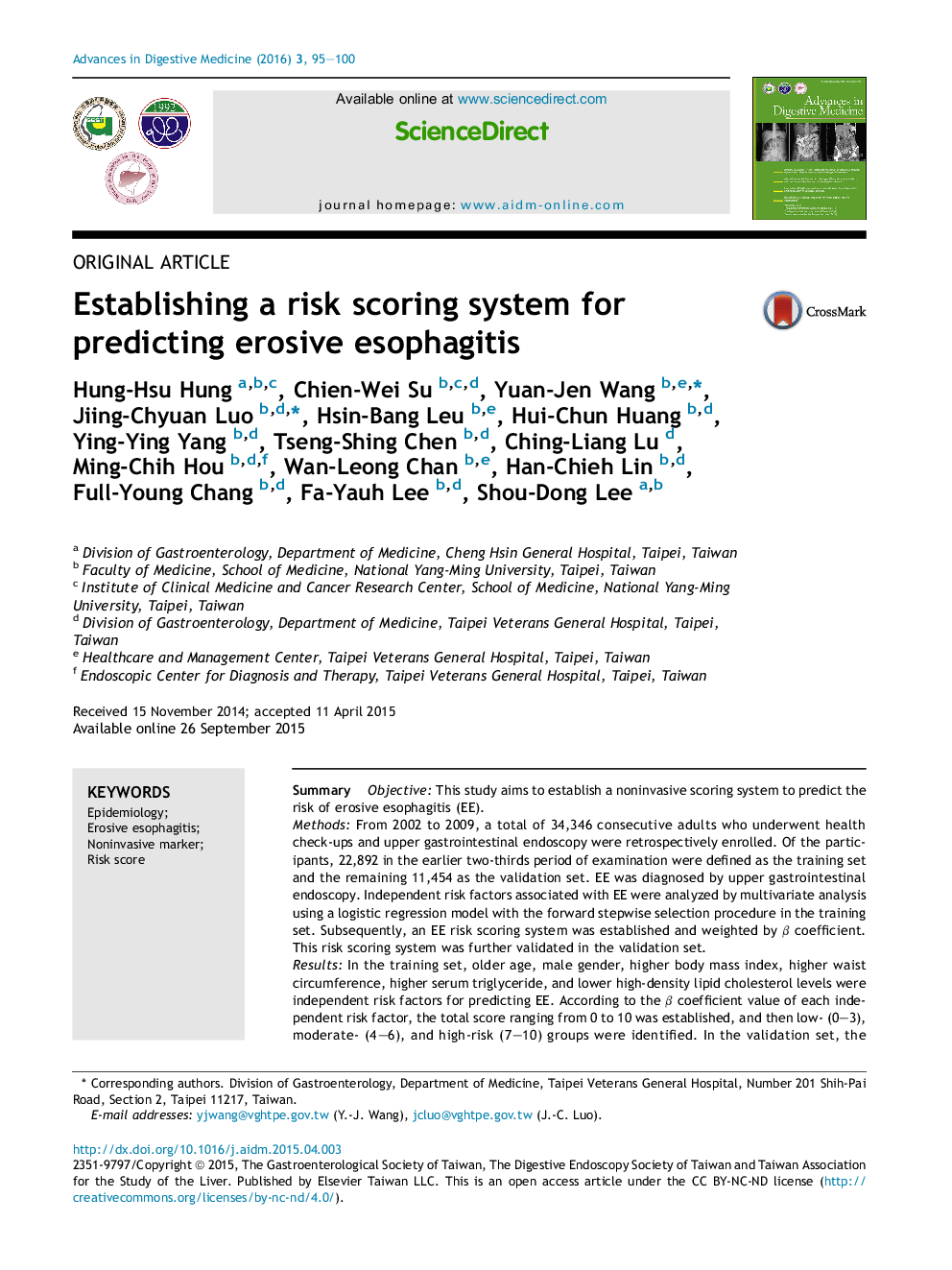| Article ID | Journal | Published Year | Pages | File Type |
|---|---|---|---|---|
| 3278499 | Advances in Digestive Medicine | 2016 | 6 Pages |
SummaryObjectiveThis study aims to establish a noninvasive scoring system to predict the risk of erosive esophagitis (EE).MethodsFrom 2002 to 2009, a total of 34,346 consecutive adults who underwent health check-ups and upper gastrointestinal endoscopy were retrospectively enrolled. Of the participants, 22,892 in the earlier two-thirds period of examination were defined as the training set and the remaining 11,454 as the validation set. EE was diagnosed by upper gastrointestinal endoscopy. Independent risk factors associated with EE were analyzed by multivariate analysis using a logistic regression model with the forward stepwise selection procedure in the training set. Subsequently, an EE risk scoring system was established and weighted by β coefficient. This risk scoring system was further validated in the validation set.ResultsIn the training set, older age, male gender, higher body mass index, higher waist circumference, higher serum triglyceride, and lower high-density lipid cholesterol levels were independent risk factors for predicting EE. According to the β coefficient value of each independent risk factor, the total score ranging from 0 to 10 was established, and then low- (0–3), moderate- (4–6), and high-risk (7–10) groups were identified. In the validation set, the prevalence rates of EE in the low-, moderate-, and high-risk groups were 5.15%, 15.76% and 26.11%, respectively (p < 0.001).ConclusionThis simple noninvasive risk scoring system, including factors of age, gender, body mass index, waist circumference, triglyceride, and high-density lipid cholesterol, effectively predicted EE and stratified its incidence.
